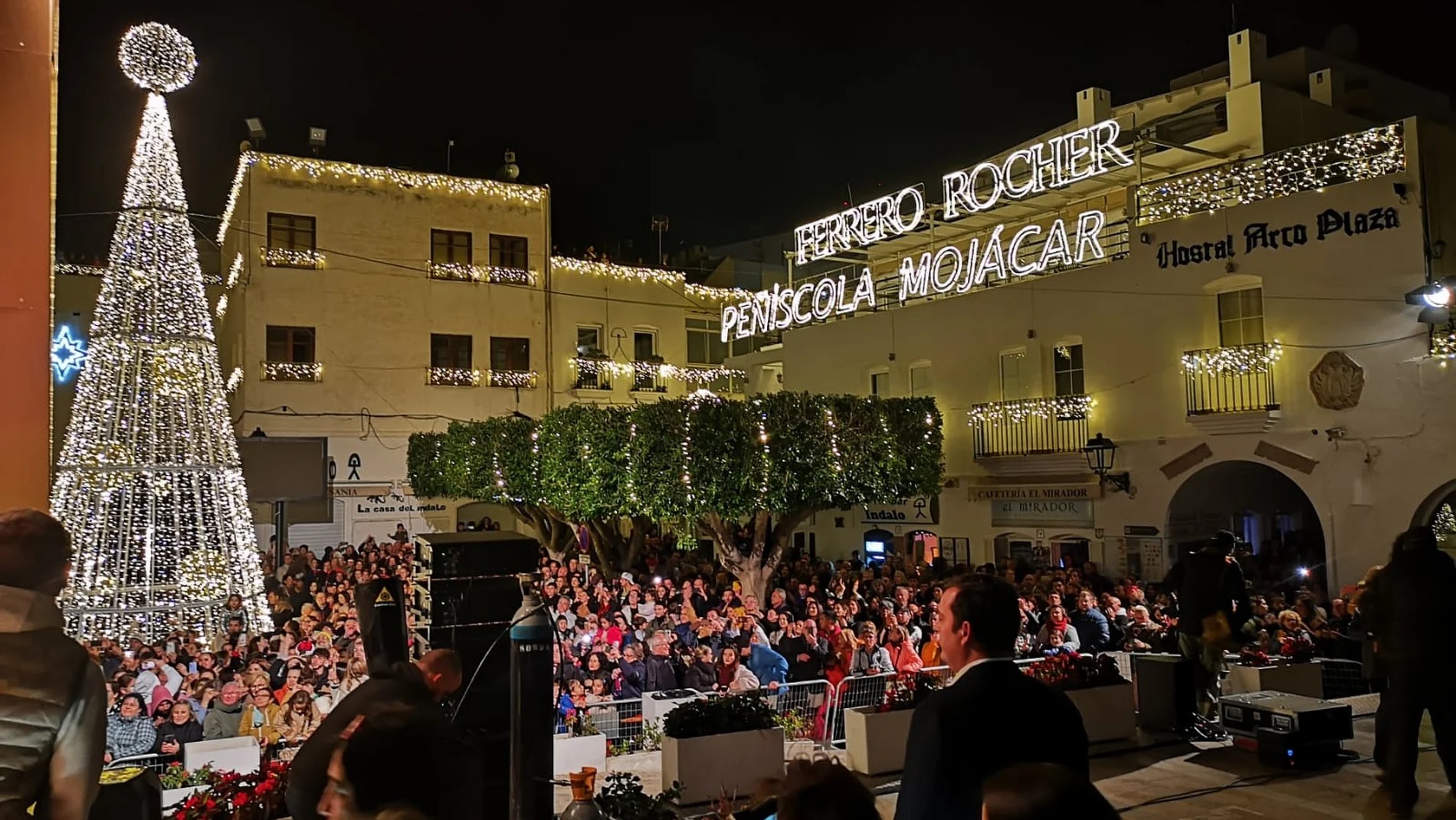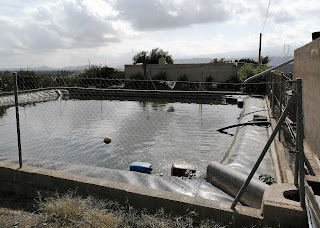Archaeologists have begun work on a new dig to discover precisely what lies under the town of Disneyville in southern Spain.
It is known that the settlement under the garish collection of today's souvenir stands and disco-pubs was once called Mojácar, but there is little left to guide the investigators into an idea of life in the town in the Twentieth Century.
Beginning at the foot of the hill, volunteers from the Granada School of Archaeology have been working diligently with spades, brushes and blue plastic buckets to unearth the secrets of the town that once existed here.
They now know that the 'Moorish Fountain' was built over the remains of the earlier 'Public Fountain', with a bounty of white marble in what was known at the time as the 'Bathroom China' style of reconversion. The fountain's earlier purpose of washing clothes, refreshing the livestock and providing drinking water (this in the halcyon times before the nuclear desalination plant) was largely sublimated in favour of a photographic concept, designed to seduce the weary visitors, with the erection of a peculiar and most ill-thought municipal art gallery and some other attractions of dubious historical value nearby. By the turn of the century, the area had become the centre of Mojaquero culture, with seven bars and a number of jolly festivals, usually including the ancient sport of delivering something pointy to a gaily coloured and beribboned hole from horseback (an early version of wham, bam and thank you Ma'am).
We drive up the hill on the Avenida Encamp (named after a town in Andorra famous for its foreign bank accounts) and past the venerable Hotel Moresco, which is one of the rare buildings that has survived the many changes to the settlement over the centuries. Originally built by the Phoenicians, the hotel has remained closed to the public now for over 65 years, glaring remorselessly at the passers-by from its location on the bluff. The owners are said to owe more money in taxes than the value of the building, while having remarkable connections in Madrid. So, an impasse.
Visitors would find it hard to imagine that, at one time, Disneyville was once thought to be an attractive residential village, with a small number of amusing bars, an elegant theatre, an open-air cinema, several romantic arches (including the Arco de Luciana), a single town hall building and sundry other wonders now lost. The surrounds of the old castle that crowns the hill was heavily reconverted in the late 20th Century, with the discovery of an ancient burial ground bulldozed quickly over, and is now the home to a worldwide association of graffiti artists. Another area used as an ancient cemetery was the Plaza de Parterre, rebuilt in an amazing mixture of styles, including Roman, Moorish and Neo-vulgarian. Above, archaeologists have located a strange plaza with what appears to be a tiny underground garage (evidently accessible only to those with impeccable connections who may have been allowed to drive through the pedestrian streets of the village before the introduction of personal fliers and other modern forms of transportation).
But, after all is done, the characterless buildings excavated to find the cultura popular underneath, we must move to  the
Plaza Nueva, so called, despite being erected in the early 16th
Century. At the time, settlers, given land in nearby Turre by Royal
Decree, could not stay overnight in that region, thanks to the irate mozarabes
who dwelt in the hills above, so they would live in and around the main
square of Moxacra - as the town was called by the departed Moors.
the
Plaza Nueva, so called, despite being erected in the early 16th
Century. At the time, settlers, given land in nearby Turre by Royal
Decree, could not stay overnight in that region, thanks to the irate mozarabes
who dwelt in the hills above, so they would live in and around the main
square of Moxacra - as the town was called by the departed Moors.
A few centuries later, now with a road of access built in the mid 1950s (the Generalísimo, later Avenida Horizon and now Av Encamp), the square became the main point of the village. A small hotel called the Hotel Indalo dominated the plaza (archaeologists have found traces of it under the remains of at least fifteen different nick nack shops) and diagonally across the square, the largest of all the emporia stands, three stories of tat. Previously, a modest carpentry evidently occupied the same space, connected with attractive arches to the narrow street to the left and the wider pedestrian avenue towards the church on the right.
But, it's the viewpoint we focus our attention on: This was a three-storey car-park built by a mayor in the early eighties, with vertiginous ramps for the vehicles. The building was in one way a failure, but it was later used for some small purposes underneath, and a mayor purpose above, where its large marble roof became a perfect place for a number of competing cafeterias to fill with their brightly-coloured tables and dustbins. The viewpoint was an immediate success (substituting, as it did, the previous exactly-the-same view).
In 2016, the construction was demolished and another viewpoint was created to crown a fresh - albeit never completed town hall (paperwork and jobs, then as now, was a lively consideration of the local inhabitants). The view is marred somewhat by an earlier wave of archeologists, who disembowled the famous 'piramid mountain' in front, known in previous times as Mojácar la Vieja, which was later found to be empty.
The narrow streets of the earlier town were, generally speaking, preserved (except near the church, now a souvenir shop selling Chinese-made material, including small busts of one Walter B Disney, said to have been born here in the late 1890s). Some streets had been introduced, as it were 'from scratch', in the 1950s and evidence of earlier lanes, running in different directions, give an early example to the sometimes ingenious local planning. The earlier 'popular architecture' was replaced in the second half of the 20th Century by uninspired 'off the shelf' designs with untypical large windows, later used inevitably as shop-fronts.
One narrow alley gives evidence to a brief presence of a large number of pre-Brexit British settlers in Disneyville: a street which for around thirty years was called Calle Pedro Barato, named after an ex-pat scallywag who was known as 'Cheap Pete' by a grateful if poorly-informed mayor. The name of the street was quietly changed in the early years of the current century to Calle Cal.
Disneyville hides many interesting anecdotes under the streets and rubble and is well worth a visit.
